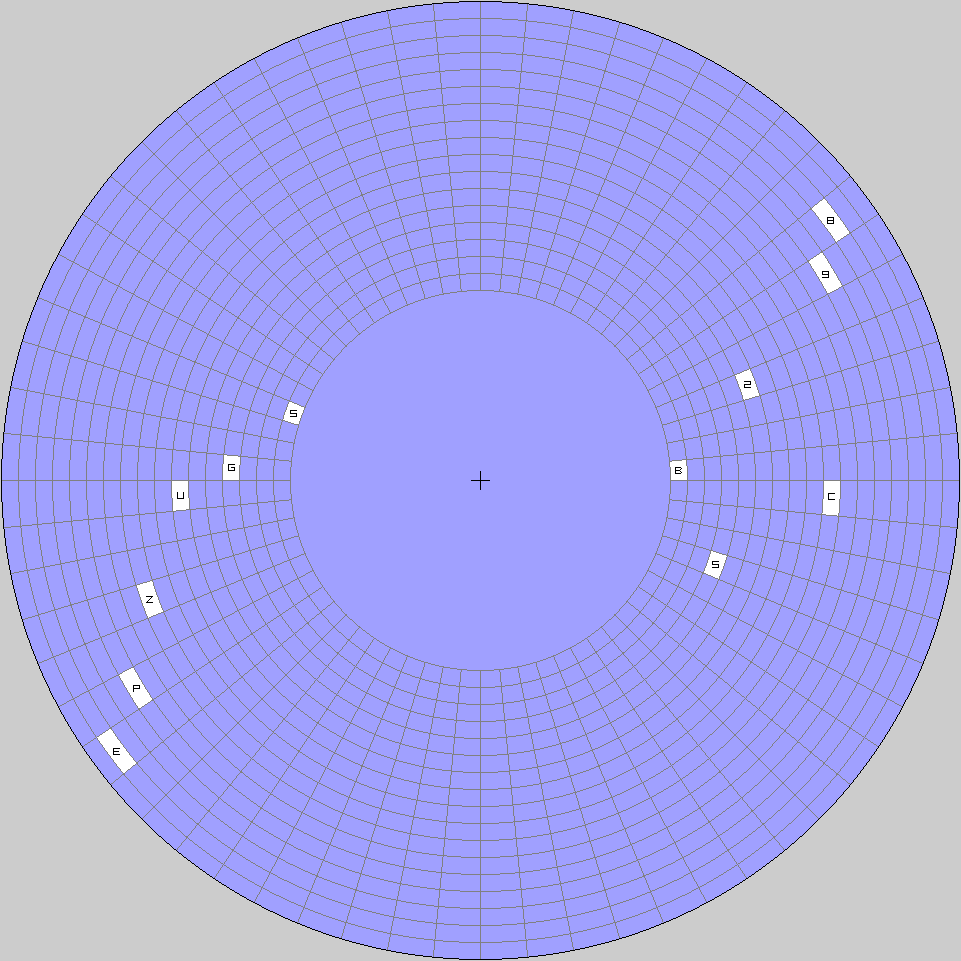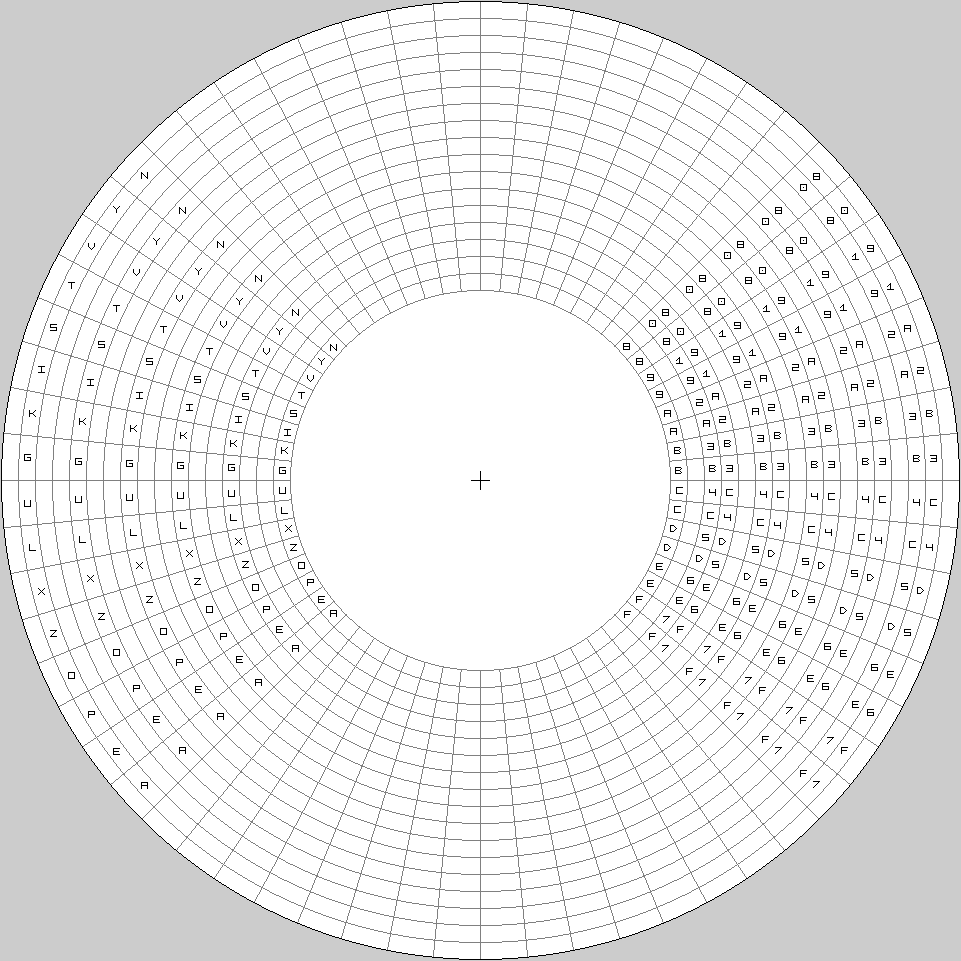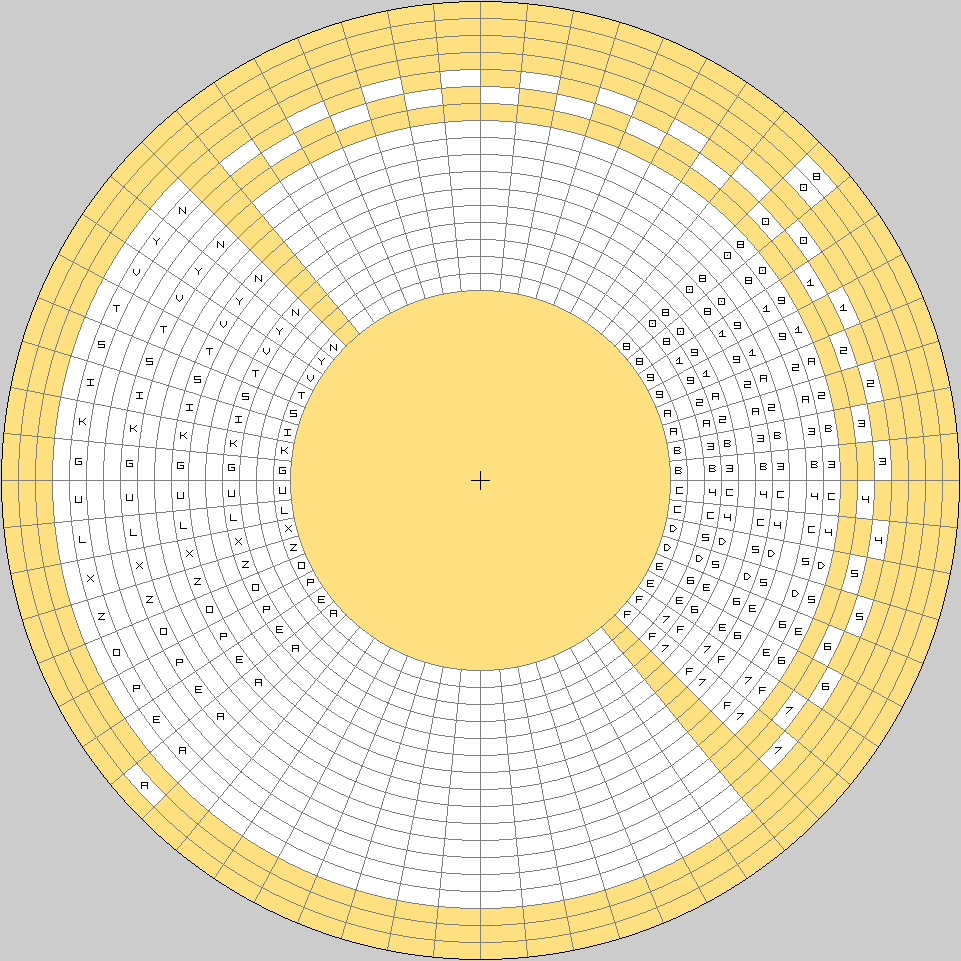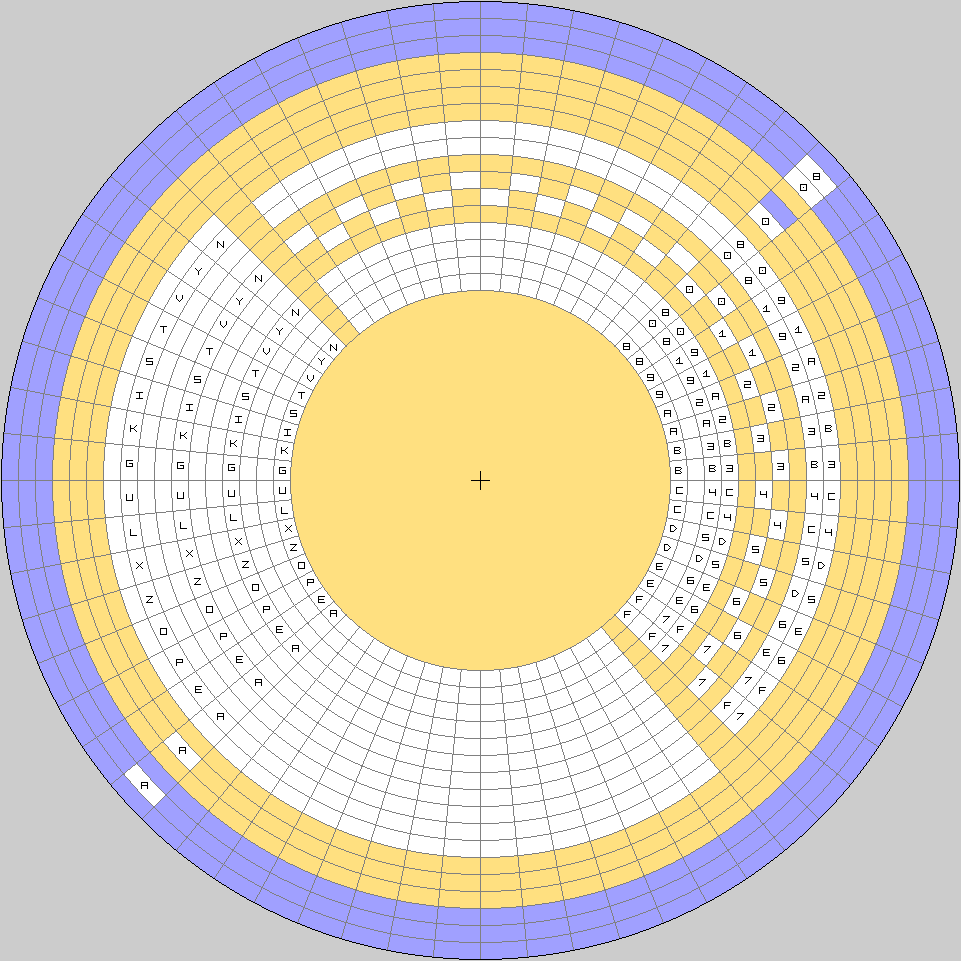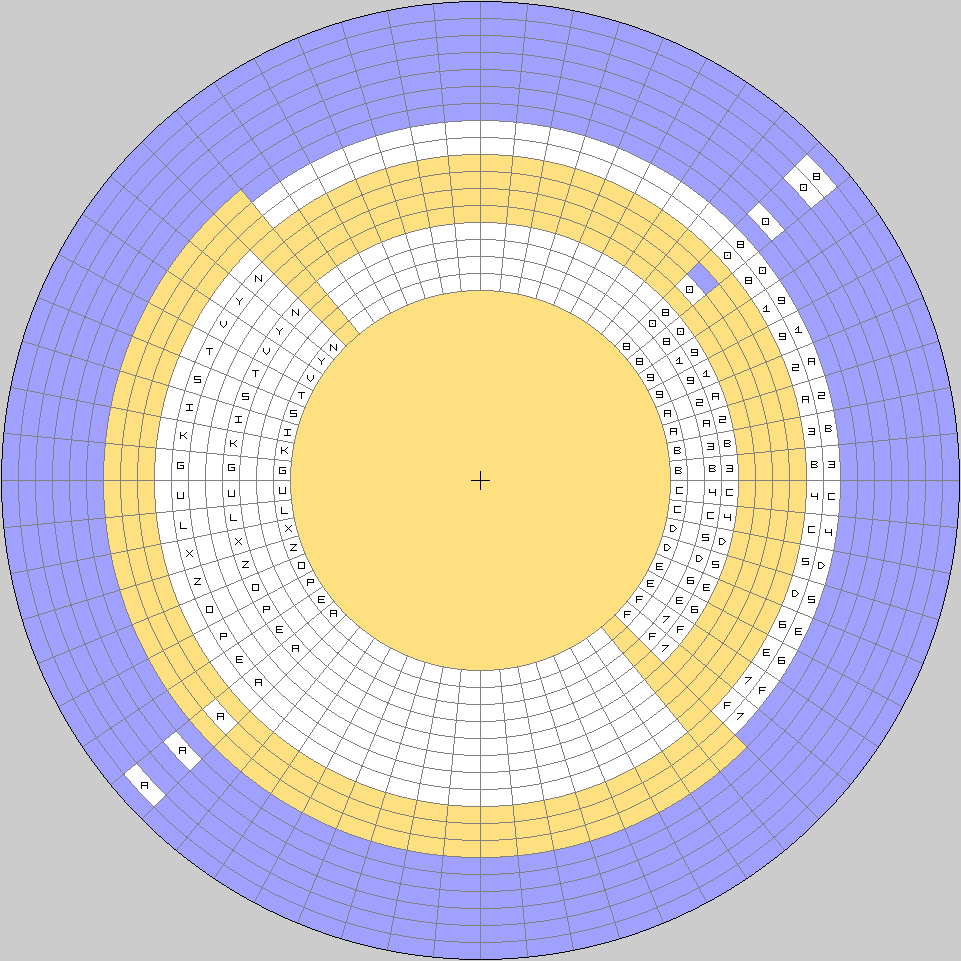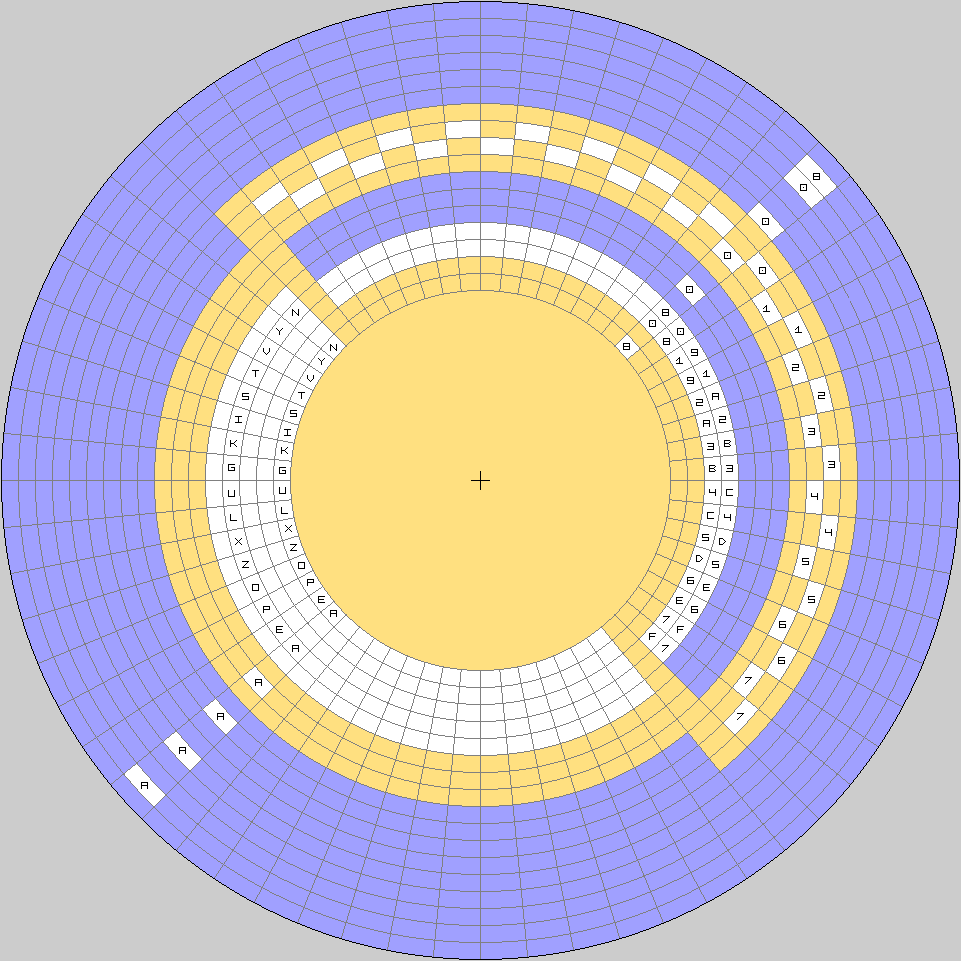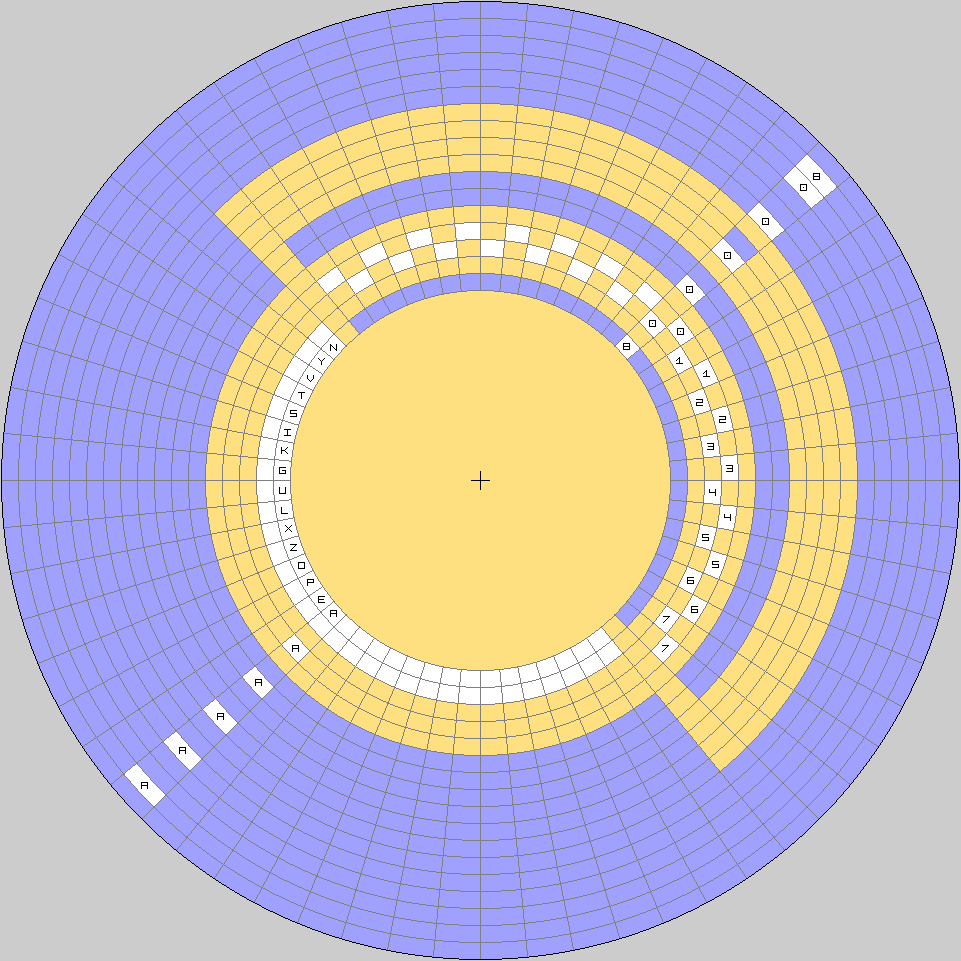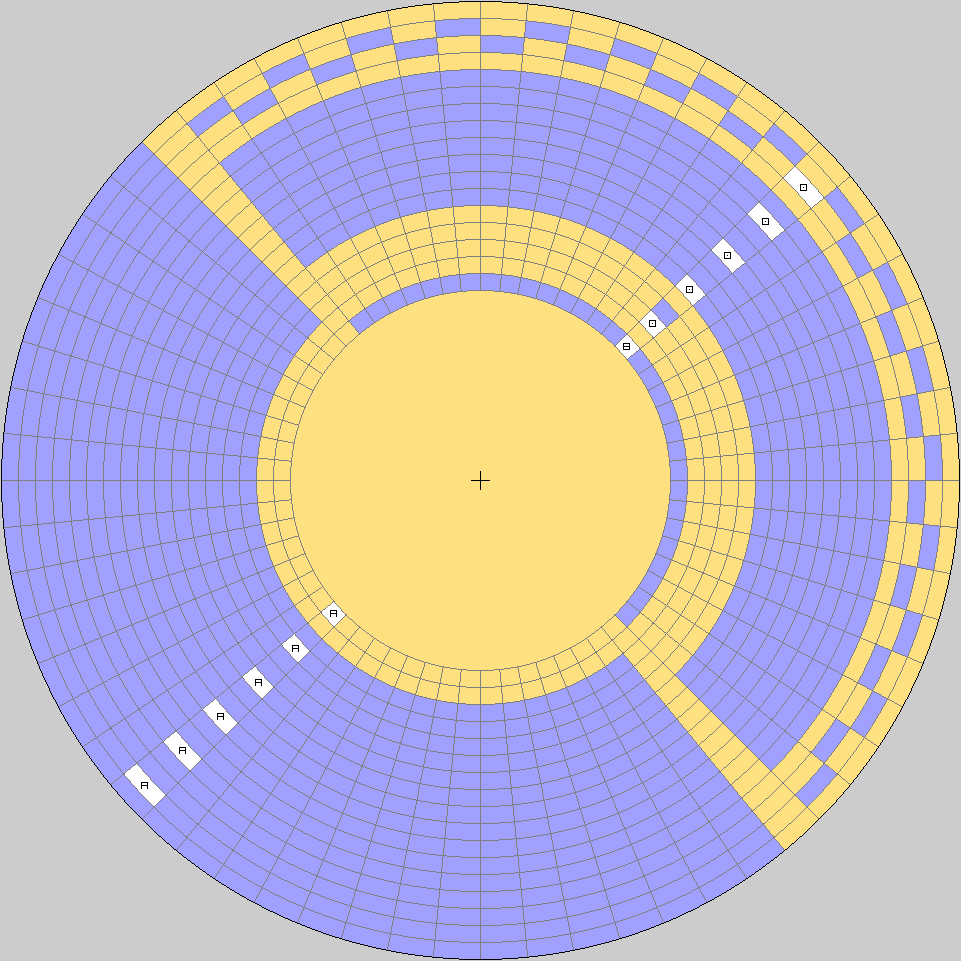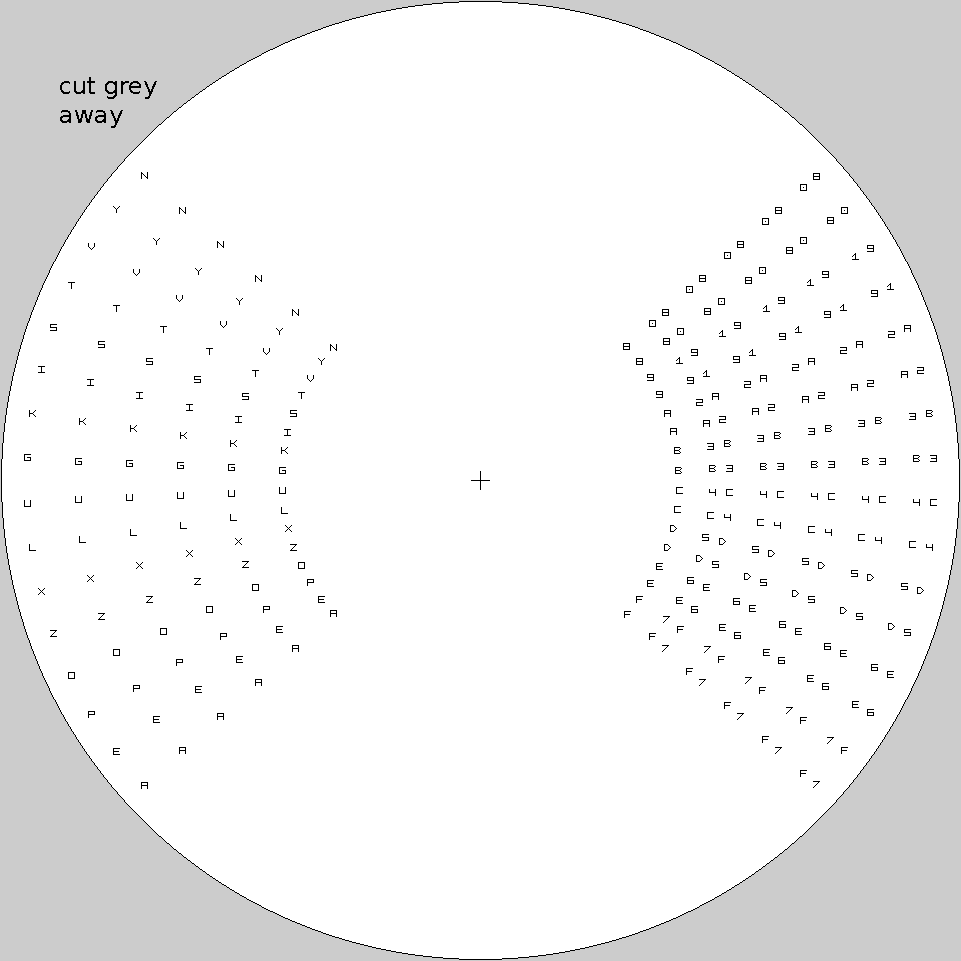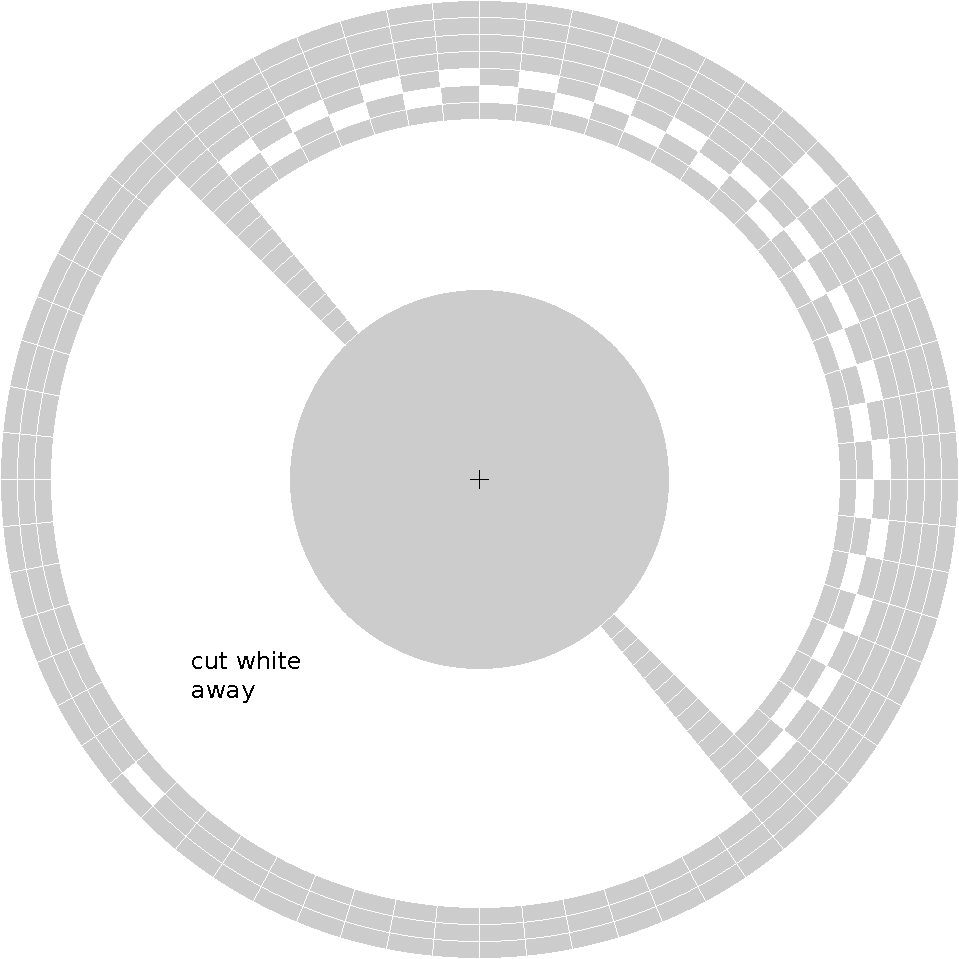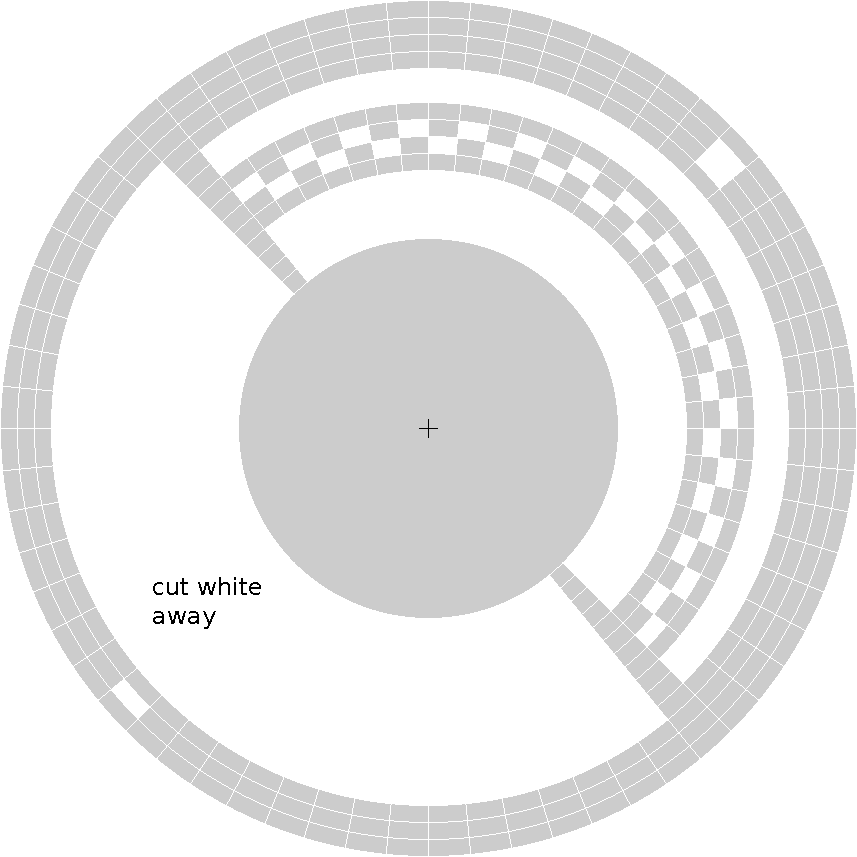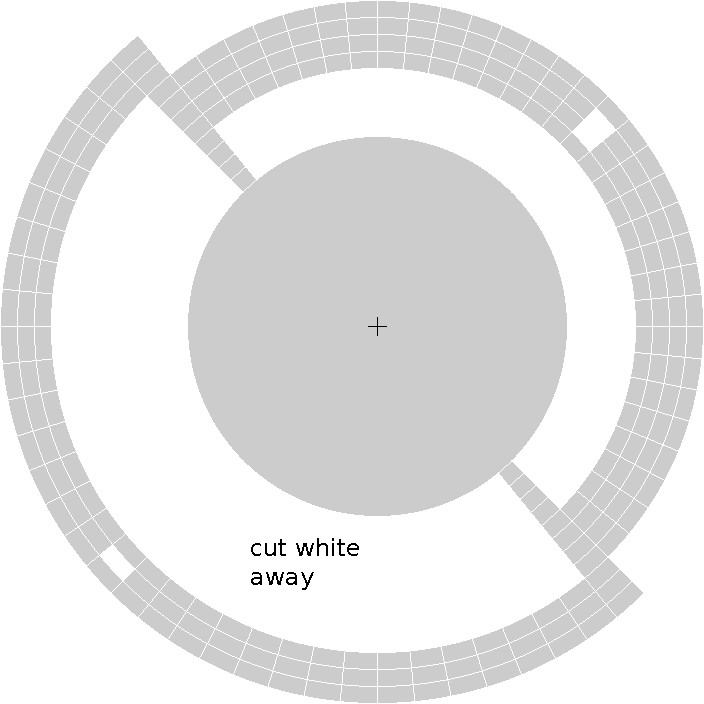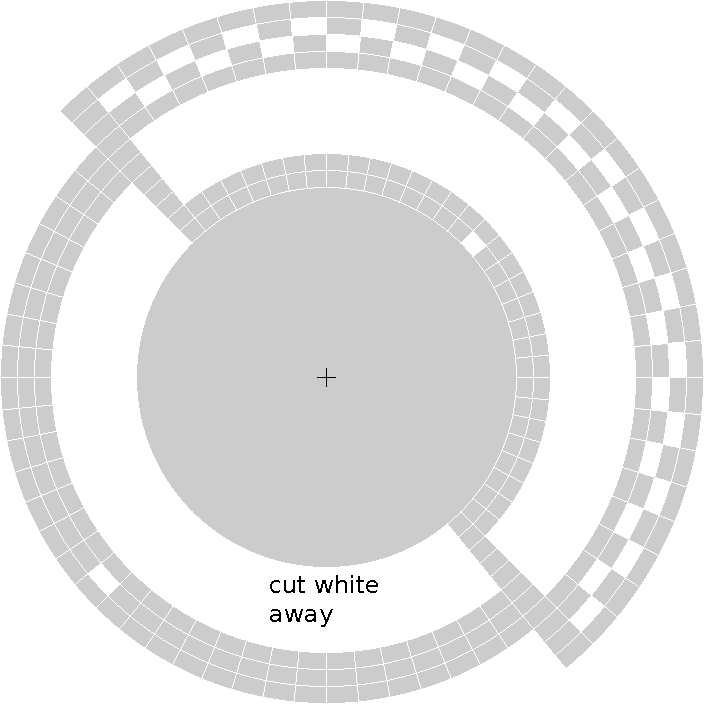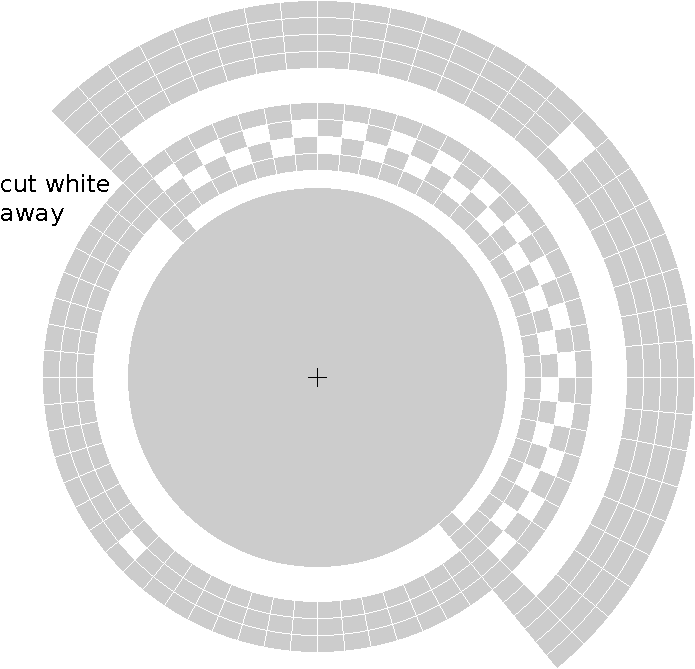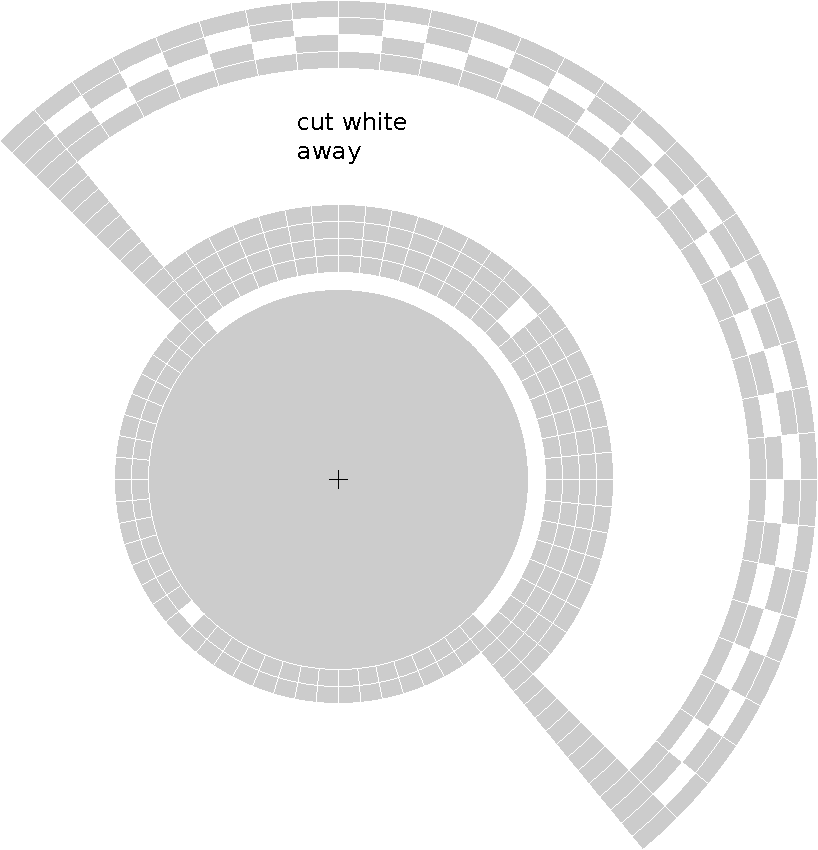NES Game Genie code wheel
Introduction
This page is not properly accessible with text or speech browsers because it relies on images without alt texts. Sorry about that.
I have designed a code wheel that lets you encode and decode six-letter codes used by the Nintendo Entertainment System's Game Genie cheat cartridge. Eight-letter codes are not supported. The wheel resembles copy protection wheels shipped with old computer games.
The code wheel consists of seven concentric discs (e.g. circular pieces of paper pinned together in the centre). All the text is on the bottom disc. The other discs are “mask discs” and have holes in them. Each letter or digit on the bottom disc can only be seen if all the other discs have a hole above it.
For information on how NES Game Genie codes work, see NES Game Genie Code Format DOC v0.71 by Benzene of Digital Emutations or the diagram in the aforementioned Game Genie article.
The code wheel will show:
- On the left side: the Game Genie code (6 letters).
- On the right side: 6 hexadecimal digits:
- The first 4 digits are the 16-bit CPU address. The most significant bit is always set, so the address is always
8000–FFFF. - The last 2 digits are the 8-bit replacement value,
00–FF.
- The first 4 digits are the 16-bit CPU address. The most significant bit is always set, so the address is always
An example of the wheel showing that code EPZUGS corresponds to CPU address 0xB52C and replacement value 0x98:
Inside the wheel
The sequence of images below shows the discs being stacked on top of each other one by one. The bottommost disc is always white, the topmost disc is always yellow, and the discs in between are blue.
Below is each layer separately as a printable image. (Despite the texts saying “cut white away”, don't cut the thin white lines.)
Known issues
I printed all the seven discs on a single sheet of A4 paper. I gave up on trying to assemble the wheel because the following problems arose:
- The wheel was clearly too small. (The small holes were difficult to cut.)
- The sectors between the left and right halves of the mask discs were too narrow and weak. I should have used a layout with more sectors than the absolute minimum (64).
- The checkerboard patterns on the mask discs were too weak. I should have left unused space between the inner and outer halves of each pattern.
- There is a lot of work manually cutting the holes.
Instead of paper, maybe a 3D printer or a laser cutter could be used?
